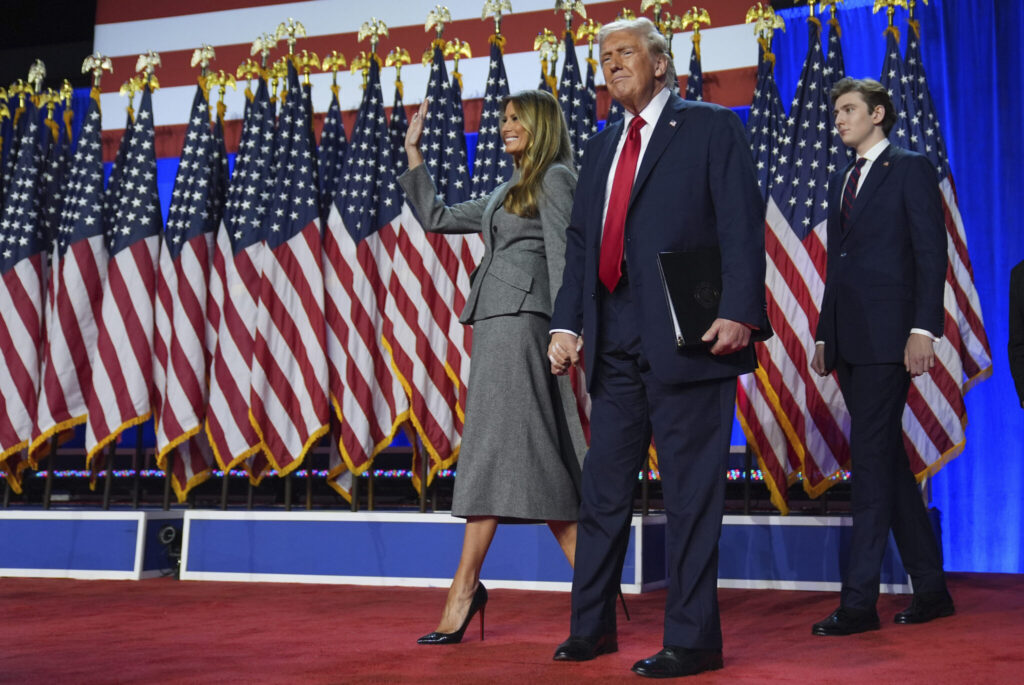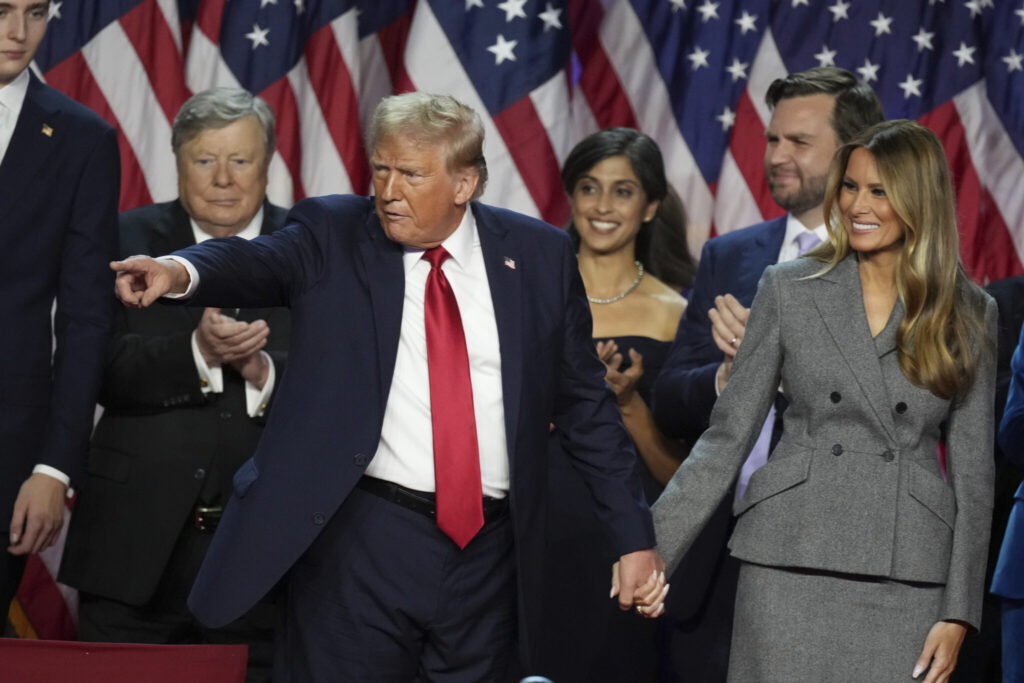Trump transition 2024/ Trump second term/ Presidential transition process/ Trump team appointments/ new transition rules/ Newslooks/ WASHINGTON/ J. Mansour/ Morning Edition/ With his White House return on the horizon, Donald Trump has 75 days to build a new administration. He faces the task of appointing around 4,000 positions, emphasizing loyalty this time, and has key allies like Robert Kennedy Jr. and JD Vance leading the charge. New rules ensure a streamlined process, aiming to avoid previous delays.

Trump’s 2024 Transition Plan: Quick Look
- Transition Team: Led by allies like Robert Kennedy Jr. and Tulsi Gabbard, with a focus on loyalty.
- Top Appointments: Includes potential roles for Elon Musk in cost-cutting and Kennedy in public health.
- New Transition Rules: Mandate that the process starts promptly, avoiding prior delays.
- Intelligence Briefings: Trump to receive daily briefings and agency access during the transition.
- Past Challenges Addressed: Updated transition laws prevent hold-ups seen in previous elections.
How Trump’s 2024 Transition Team Prepares for White House Return
Deep Look
As Donald Trump prepares to re-enter the White House, his 2024 transition period officially kicks off with just over 75 days to establish a new administration. This transition involves filling roughly 4,000 federal positions, including around 1,200 that will require Senate confirmation—a process likely to move more smoothly with the Senate now under Republican control. Trump’s team is prioritizing loyalty for this round of appointments, hoping to avoid some of the challenges and disillusionment from his first term.
Building a New Team: Key Appointments and Prominent Allies
Trump’s transition team is led by a blend of family members and allies from his campaign. His sons, Donald Trump Jr. and Eric Trump, alongside prominent figures like Robert Kennedy Jr. and Tulsi Gabbard, will play essential roles. Kennedy, an anti-vaccine advocate, has been tapped to work on public health initiatives, with Trump stating that he will “help make America healthy again.” Elon Musk, CEO of Tesla and vocal Trump supporter, may take on a role in “federal cost-cutting,” focusing on reducing government spending—a role Musk claims could save trillions.
Transition co-chairs Howard Lutnick, CEO of Cantor Fitzgerald, and former SBA leader Linda McMahon will oversee logistical and operational aspects, drawing contrasts to Trump’s 2016 transition. Lutnick describes the current operation as being “as different as possible” from the one led by Chris Christie in 2016. Christie’s plans were famously discarded after Trump fired him and appointed then-Vice President-elect Mike Pence to lead the transition.
In 2016, Trump assembled a Cabinet with mainstream Republicans and corporate leaders, but many later clashed with his administration. This time, Trump has promised a team aligned closely with his values, selecting figures who match his ideological stance and communication style, reflecting his prioritization of loyalty and alignment.
The Transition Process: New Guidelines and Key Changes
Trump’s team is working under updated transition laws designed to prevent the delays and challenges of past elections. Unlike the Biden-Harris campaign, Trump’s team did not sign any pre-Election Day agreements with the General Services Administration (GSA), which manages office space and provides tech support. As a result, Trump missed some early logistical deadlines, such as arrangements for office space, tech setup, and agency access. However, the Presidential Transition Improvement Act of 2022, passed after Trump’s 2020 contest, ensures that essential services are not held up.
This new legislation, enacted after the contentious 2020 transition, mandates that transition support begins automatically five days after the election, even if results remain contested. This rule prevents delays that occurred in 2020 when Trump’s legal challenges held up the Biden administration’s transition for weeks.
Key Briefings and National Security Considerations
Another priority of the transition is to ensure seamless intelligence and security handovers. Traditionally, presidents-elect receive daily or near-daily intelligence briefings, with senior national security advisors providing updates on classified matters and covert operations. In 2008, outgoing President George W. Bush personally briefed Barack Obama on critical operations, and in 2016, Susan Rice provided briefings to Trump’s national security appointees.
The handover of national security intelligence can be pivotal, and the importance of smooth briefings has been underscored in past elections. In 2000, the contested election between George W. Bush and Al Gore delayed the transition by five weeks, a period that left Bush with less time to prepare for security threats. The shortened transition window led to scrutiny over potential gaps in security preparedness before the 9/11 attacks. The 2024 transition team will look to avoid similar gaps by ensuring comprehensive briefings as early as possible.
A New Approach to Government Roles and Transition Philosophy
In building his administration, Trump’s team plans to prioritize loyal appointees, with fewer mainstream politicians or corporate figures. The goal is to create an administration that aligns closely with Trump’s ideological positions and style of governance. His campaign’s approach this year has centered around shaking up bureaucratic structures and reducing federal spending, highlighted by potential high-profile roles for unconventional figures like Musk in cost-cutting and Kennedy in public health.
Trump’s decisions on agency heads and advisors will reflect his focus on loyalty and efficiency over broader appeal, marking a departure from the mixed ideological base of his first Cabinet. The administration is expected to place a greater emphasis on individuals with strong alignment to Trump’s vision, which may lead to rapid changes within federal agencies as he assumes office.
Looking Ahead: Trump’s Transition Period and Its Impact
The Trump team faces a critical 75-day period to establish a government that will enact his agenda from day one. The new 2022 transition guidelines, coupled with GOP Senate control, give Trump’s administration a smoother path for getting personnel into position. Given the focus on loyalty and alignment, Trump’s appointees are likely to be figures with a clear mandate to execute his policy goals without dissent—a shift from the dynamics seen during his first term.
With more efficient processes in place, Trump’s team aims to start addressing key issues immediately after inauguration. The updates to transition rules mean that Trump’s team can move forward with fewer logistical hurdles, while the emphasis on loyalists sets a clear direction for his second term. This approach could bring both stability within the administration and potentially swifter action on Trump’s policy priorities, reflecting his commitment to implementing his vision for the next four years.







